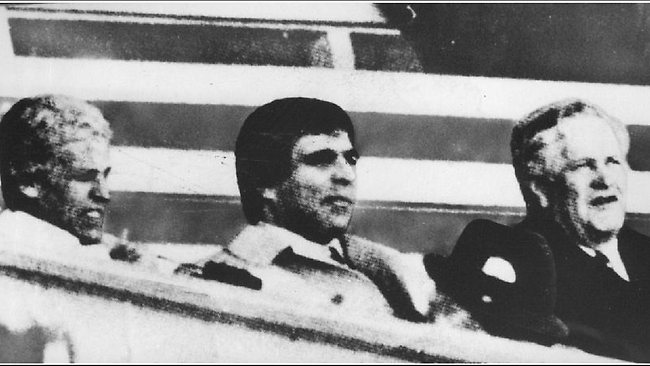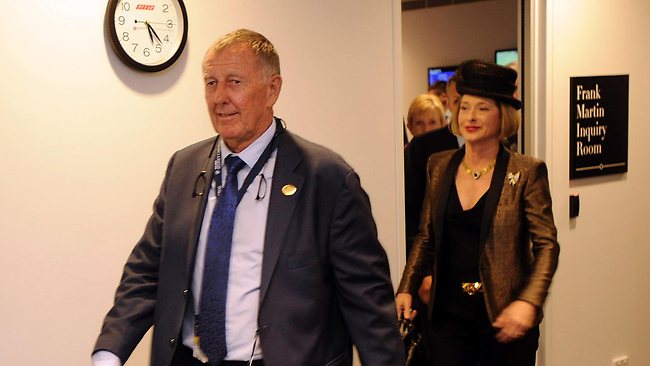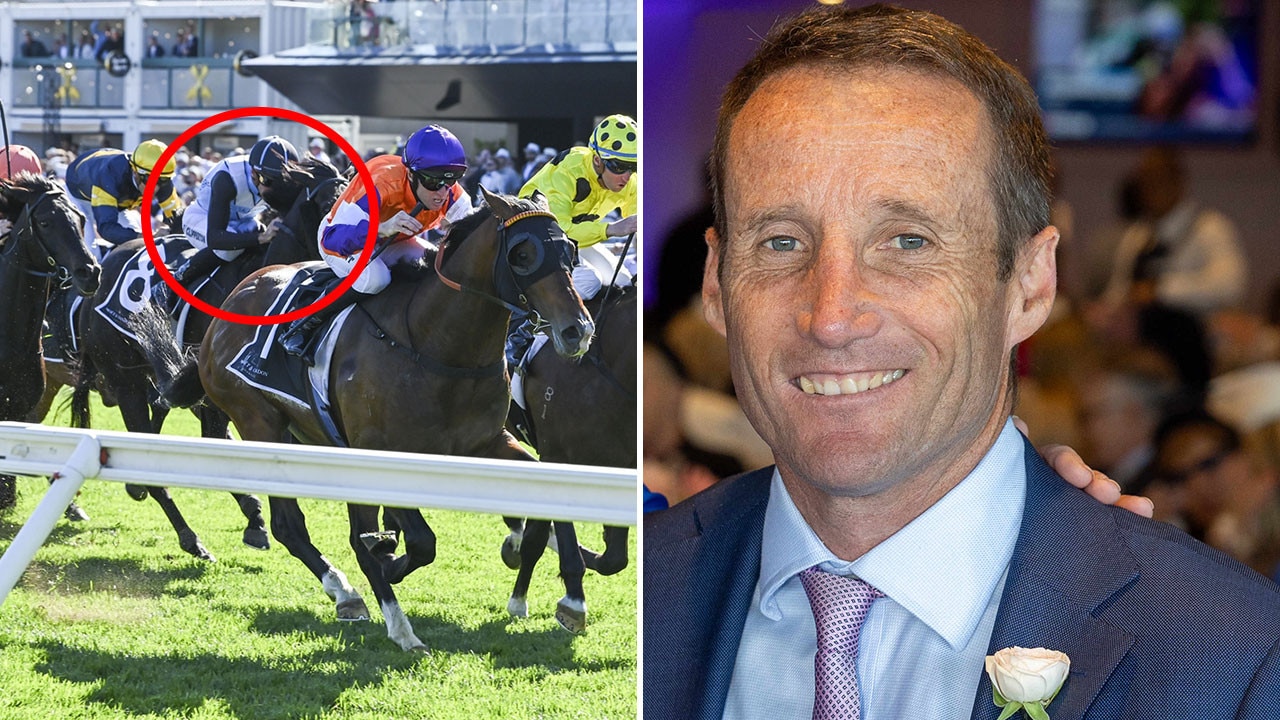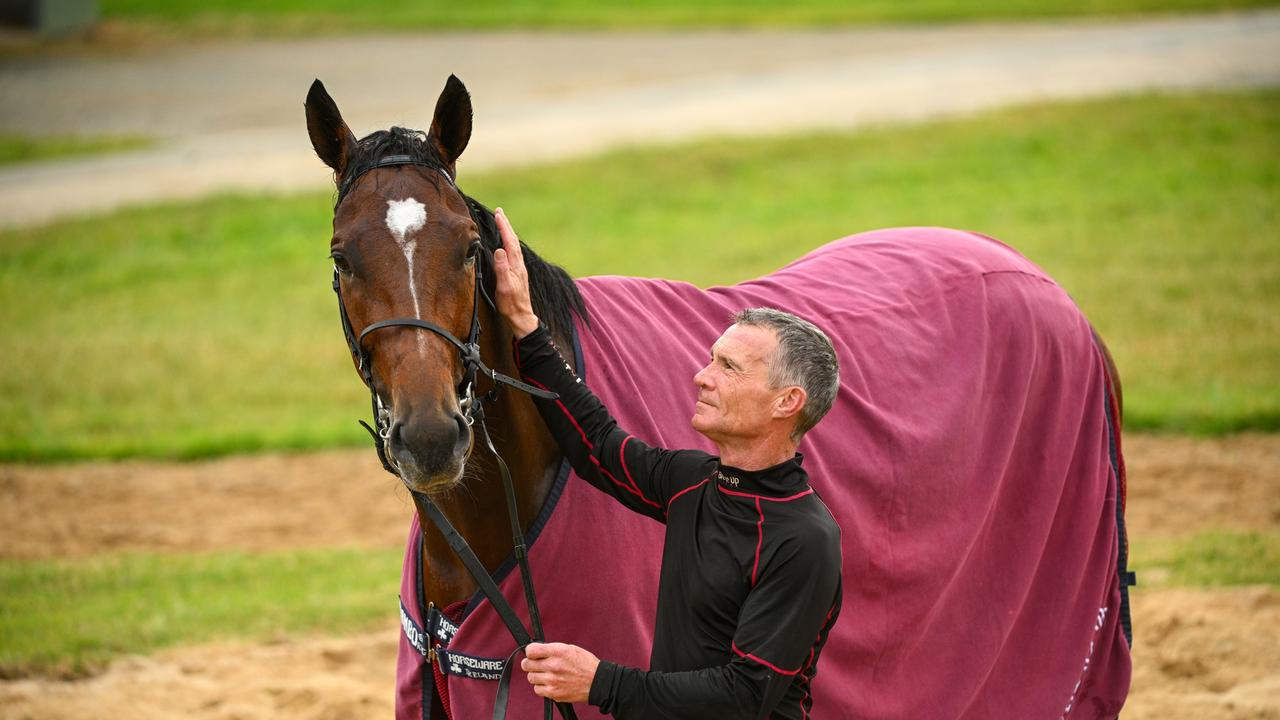More Joyous-John Singleton-Gai Waterhouse pantomime just the latest in a run of racing dramas
THE mix of racing, the sport of controversy, and Sydney, the city of sin, has always produced headlines and the likely duo has done it again.

THE mix of racing, the sport of controversy, and Sydney, the city of sin, has always produced headlines and the likely duo has done it again with the More Joyous-John Singleton-Gai Waterhouse pantomime that started Saturday at Randwick and will come to a conclusion in the centre of Sydney's CBD on Monday.
At the moment it is just a headline. Could it develop into a scandal?
Who knows, but I am sure it won't be as scandalous as a Melbourne expose last November when Damien Oliver admitted having $10,000 on a favourite at Moonee Valley two years earlier in a race where he rode the second favourite.
The Oliver shocker (and I am still shocked) was incredibly all but swept under the carpet by Racing Victoria when it came to a hearing last November, with the leading rider receiving a 10-month suspension, which will conveniently allow him to ride at next year's spring carnival. What's more he was allowed to keep the $11,000 he won on the race.
What is striking about the Singo and Gai melodrama is the cast is almost of a Hollywood blockbuster standard. Mind you, the same headline performers have all been trotted out before.
Singo and Gai have made more front-page headlines than Russell Crowe and Nicole Kidman.
Gai is usually the heroine, but on Anzac Day 2005 a horse she trained, Love You Honey, painted her as the villain when it finished last in a race at Gosford and was then found to have traces of benzoylecgonine (a metabolite of cocaine) in its system. Gai was fined $15,000, which was quashed on appeal, although the offence was proven and Love You Honey disqualified.
Singo's trips to the front page are more associated with making money, spending money, getting married, getting divorced, getting drunk or getting involved in a brawl.
The other principal members of the cast are, as they say in reporting circles, "known" to stewards.
The No.1 witness for Singo, Allan Robinson, has had more run-ins with officialdom than Singo has had wives.
Some of the excerpts from his record show:
2009 - Three months disqualification under rule 135 (b) which deals with a jockey giving a horse all reasonable opportunity to win. It was his fourth breach of this rule in four years;
2009 - $400 fine for insulting behaviour when he called a chief steward's question a "suck question";
2007 - $500 fine for attempting to strike an apprentice with his whip;
2005 - $300 fine for misconduct for making comments to patrons at Newcastle race course;
2003 - Fined $1000 for handing a sum of money to a barrier worker;
2001 - Six months suspension for improper behaviour towards stewards; and
1999 - $500 fine for misconduct in relation to comments following a race at Newcastle.
The No.1 witness for Gai Waterhouse is her husband, Robbie, whose record with officialdom is widely known.
It is headed, of course, by being warned off in 1984 for his involvement in the Fine Cotton ring-in case. The warning off was lifted in 1998 and he was finally granted a bookmakers' licence again in 2001.
Within 12 months, Waterhouse was in trouble again over entering false and misleading entries in betting sheets, giving misleading evidence at an inquiry and for conduct prejudicial to the image of racing. His penalties of a $6000 fine on each of 13 charges as well as a 12-month disqualification were redefined after appeals.
Eddie Hayson, star witness No.3, has been in front of stewards once or twice, but it is as the co-owner of a brothel, Stiletto at Camperdown, that he has made the most racing headlines.
Ray Murrihy, the chief steward, has admitted he has had to talk to a number of jockeys pointing out that it may not be wise for them to congregate at Stiletto.
Andrew Johns, star witness No.4, has stayed clear of racing controversy, but as the greatest rugby league player of his generation it is impossible for him not to hit the headlines even when on the sideline.
If you go back through the history of racing in Sydney you can find scandal upon scandal. Men like Rufe Naylor and Grafter Kingsley could always be relied on to rig a race or two and, in the case of Kingsley, rig the scales so the jockey weighed in correctly.
The captains of industry could also produce a scandalous headline with the city's two best known media proprietors, Ezra Norton and Frank Packer, having a fist fight at Randwick 60 years ago.
Imagine the headlines today if Rupert Murdoch shaped up to Kerry Stokes?
Jockeys, on the other hand, are only flyweights, but in days gone by they could sell papers by engaging in some fisticuffs. George Moore and Athol Mulley traded blows in a famous stoush of the 1960s. Although it is more correct to say Moore delivered the blows and Mulley, still sitting down, received them.
In 1986, Peter Cook did not take too kindly to being knocked down in the Golden Slipper by Mick Dittman's mount Bounding Away and, on returning to the jockeys' room, Cook grabbed the winning jockey (Dittman) by the throat and the pair had to be separated by several heavyweights.
John Schreck, then chief steward, was obviously not a fight fan as he fined Cook $2000 and suspended him, and also fined Dittman $1000.
Then there's George Freeman, the most colourful racing figure of the time or, as police may have described him, the most significant gangster.
George was accused of everything bar causing the trains to run late, but his most notable racing extravaganza centred around a horse called Mr Digby, who was not registered in George's name, but was considered by most to be controlled by him.
In 1981, Mr Digby finished unplaced in a race at Randwick before coming out on the Wednesday at Canterbury and bolting in after being backed from $6 to $2.50. His trainer Harry Clark and his jockey Keith Banks were subsequently disqualified for 12 months following a retrospective inquiry into the Randwick run after the matter dragged on for almost six months.
George was said to "run" Sydney and was spoken of in hushed tones even when strong men gathered. He created perhaps an even bigger racing headline when photographed at Randwick racetrack with Dr Nick Paltos, his personal physician, and Murray Farquhar, then Chief Magistrate. The picture created a storm of Gai-Singo magnitude.
Paltos was in later years jailed over a mammoth marijuana importation.
Drugs have always been a problem and a headline grabber.
Apart from "milkshakes" (a bicarb stomach drench which helps buffer lactic acid) and anabolic steroids, the most notorious drug of recent times was timolol, a "go slow" which was used quite freely in Sydney in the 1980s before being tested for and stamped out by John Schreck and his panel.
Etorphine, or "elephant juice", the best "go fast" money could buy was introduced in Western Australia, where many cases involving big names were detected. The elephant in the room is whether elephant juice was used successfully in Sydney at the time. I believe it was and I think, in what might have been the biggest scandal of the past 30 years, it was swept under the table.





